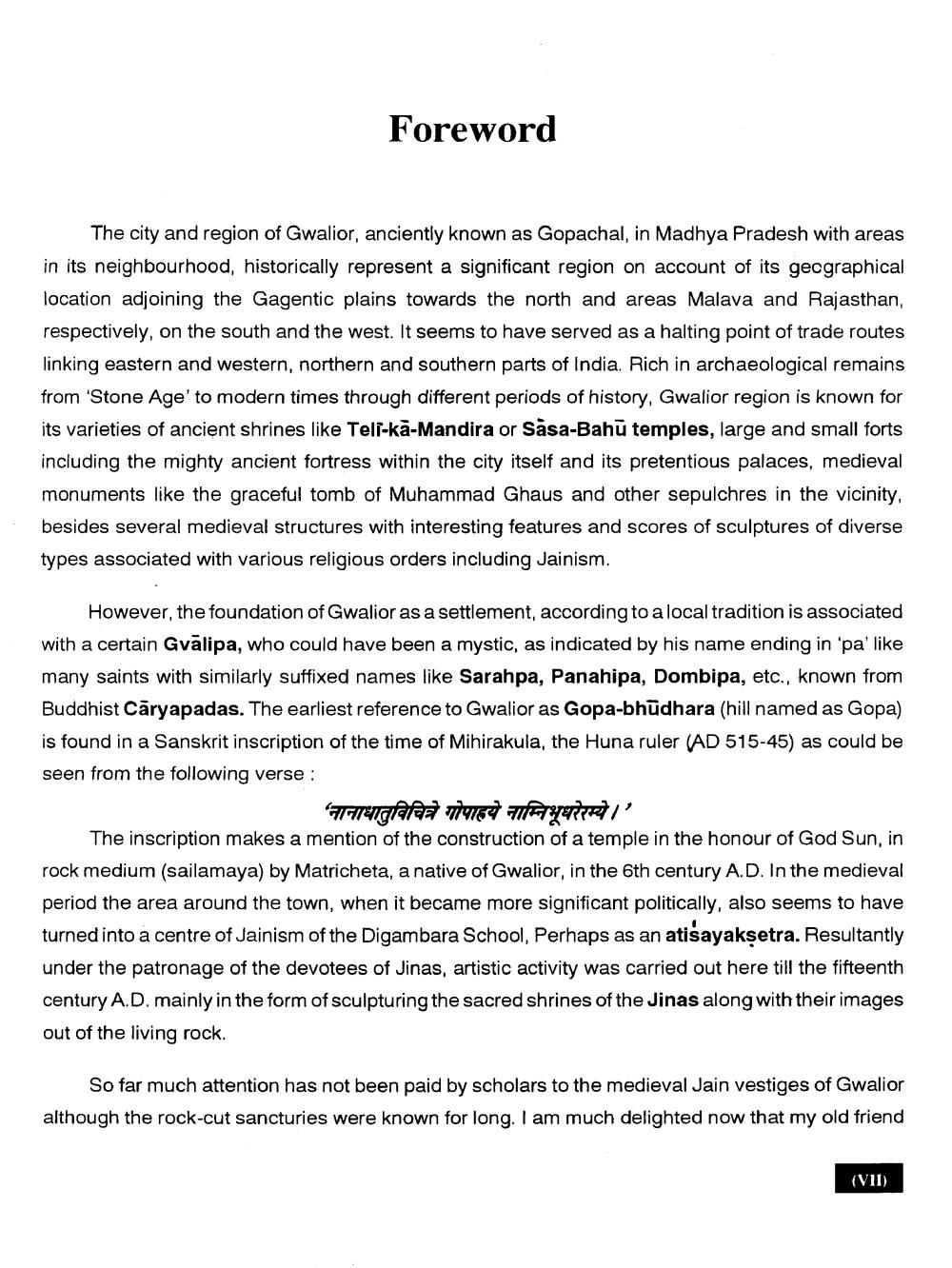________________
Foreword
The city and region of Gwalior, anciently known as Gopachal, in Madhya Pradesh with areas in its neighbourhood, historically represent a significant region on account of its gecgraphical location adjoining the Gagentic plains towards the north and areas Malava and Rajasthan, respectively, on the south and the west. It seems to have served as a halting point of trade routes linking eastern and western, northern and southern parts of India. Rich in archaeological remains from 'Stone Age' to modern times through different periods of history, Gwalior region is known for its varieties of ancient shrines like Teli-ka-Mandira or Sasa-Bahù temples, large and small forts including the mighty ancient fortress within the city itself and its pretentious palaces, medieval monuments like the graceful tomb of Muhammad Ghaus and other sepulchres in the vicinity, besides several medieval structures with interesting features and scores of sculptures of diverse types associated with various religious orders including Jainism.
However, the foundation of Gwalior as a settlement, according to a local tradition is associated with a certain Gvālipa, who could have been a mystic, as indicated by his name ending in 'pa' like many saints with similarly suffixed names like Sarahpa, Panahipa, Dombipa, etc., known from Buddhist Cāryapadas. The earliest reference to Gwalior as Gopa-bhūdhara (hill named as Gopa) is found in a Sanskrit inscription of the time of Mihirakula, the Huna ruler (AD 515-45) as could be seen from the following verse :
'नानाधातुविचित्रे गोपाहये नाम्निभूधरेरम्ये।" The inscription makes a mention of the construction of a temple in the honour of God Sun, in rock medium (sailamaya) by Matricheta, a native of Gwalior, in the 6th century A. D. In the medieval period the area around the town, when it became more significant politically, also seems to have turned into a centre of Jainism of the Digambara School, Perhaps as an atisayaksetra. Resultantly under the patronage of the devotees of Jinas, artistic activity was carried out here till the fifteenth century A.D. mainly in the form of sculpturing the sacred shrines of the Jinas along with their images out of the living rock.
So far much attention has not been paid by scholars to the medieval Jain vestiges of Gwalior although the rock-cut sancturies were known for long. I am much delighted now that my old friend
(VII)




